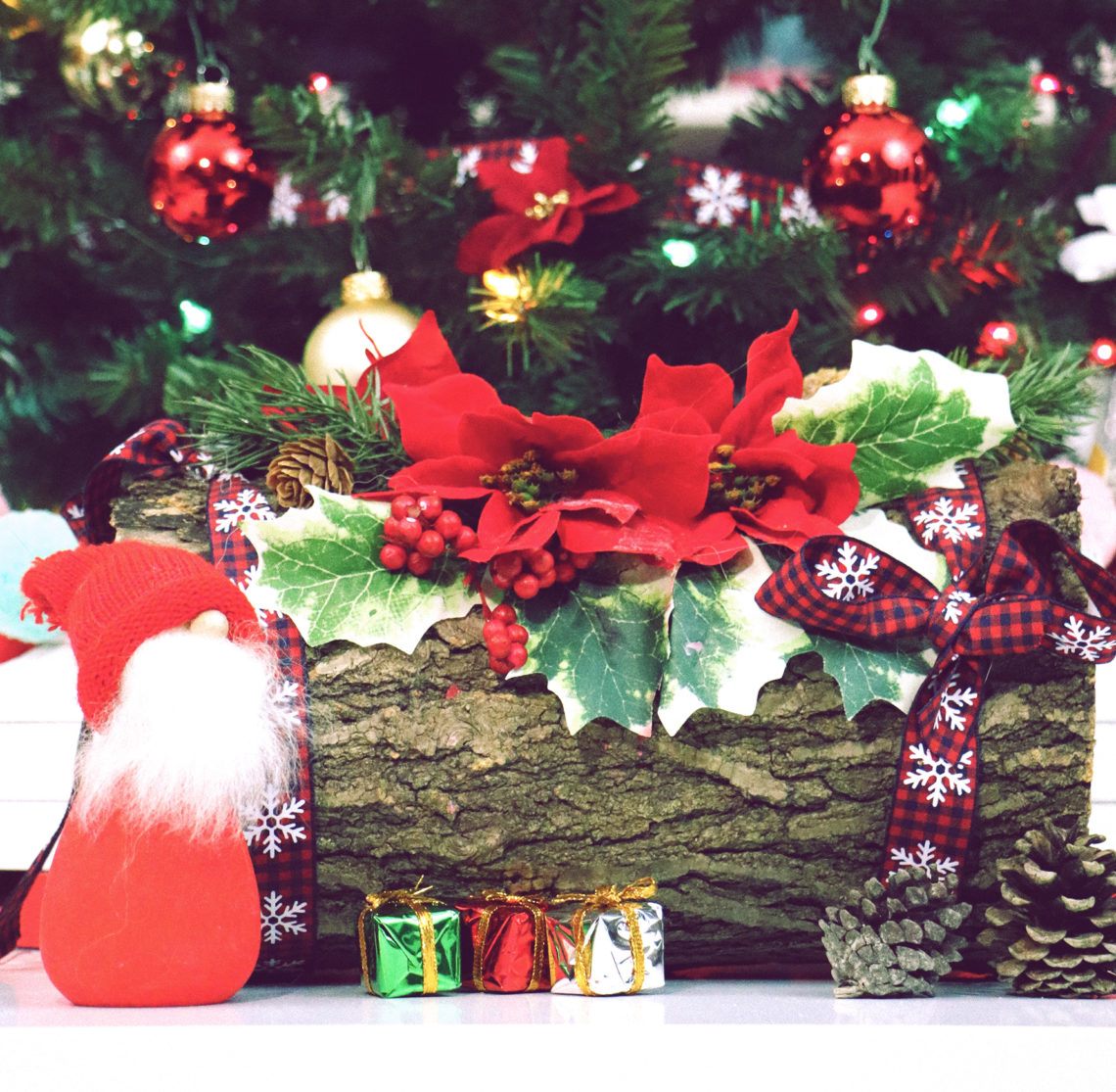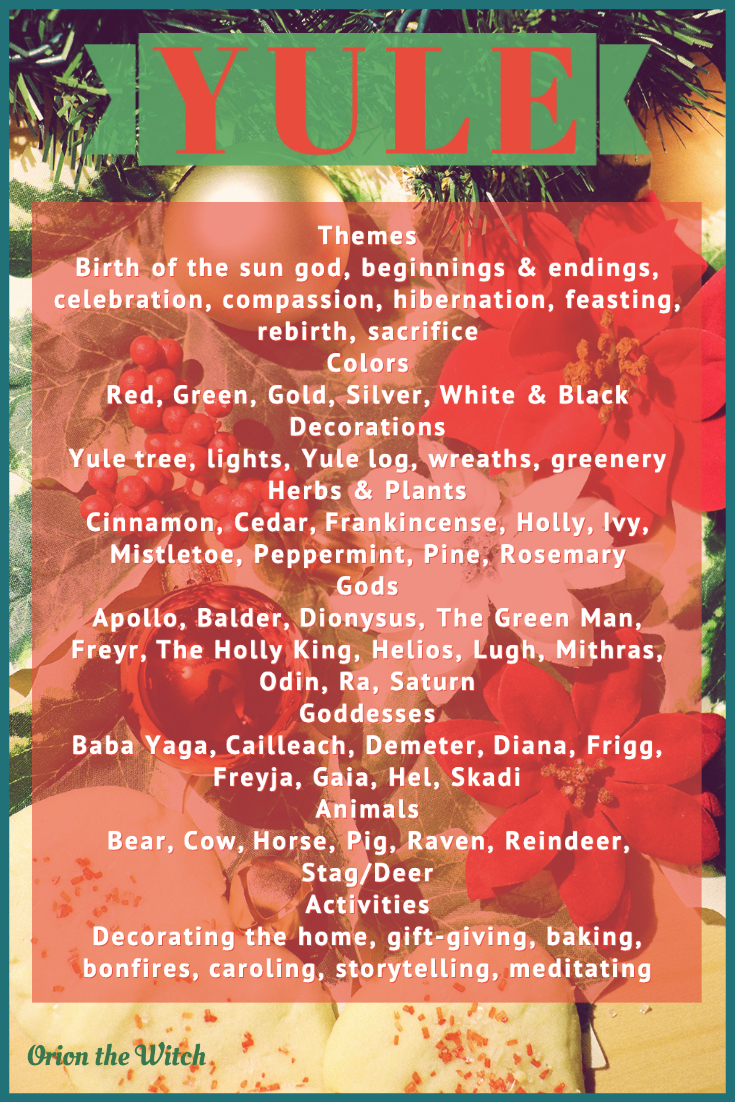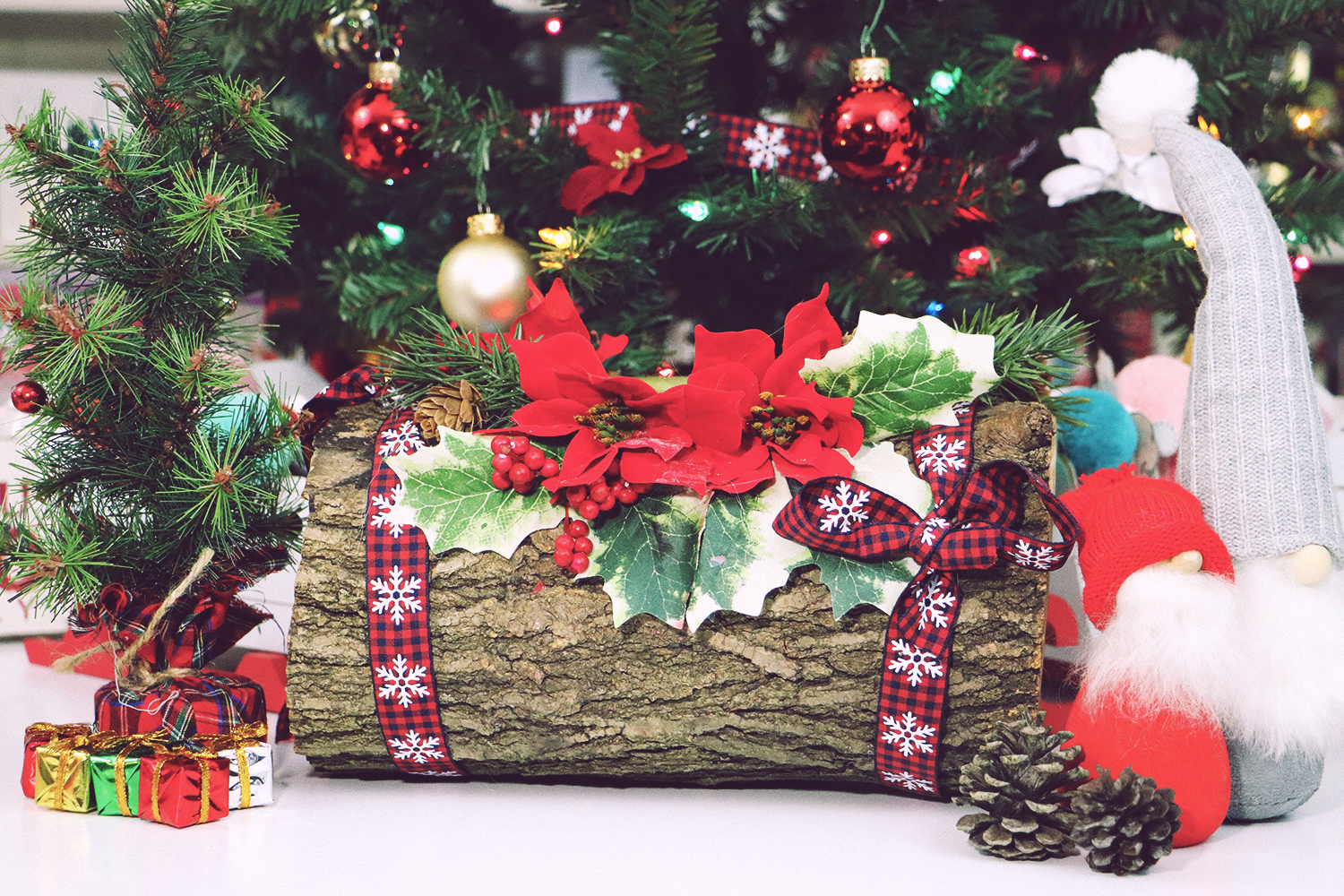Yule, the winter solstice, celebrates the magick of winter. The world around us falls silent as nature enters a deep slumber and we retreat indoors for the warmth of our homes, away from the harsh cold of winter. Yet we still find celebration and joy this season.
Although winter is cold and brutal, we celebrate and honor the solstice during this Sabbat. The winter solstice promises the sun’s return and we are renewed by the stillness of winter.
For me, Yule is a time to reflect as well as a time to celebrate with family and friends.
Yule and its origins
The winter solstice is the longest night of the year. In the northern hemisphere, the solstice usually falls on December 21st or 22nd. For the southern hemisphere, it occurs around June 21st or 22nd.
Although the winter solstice is also called “midwinter,” Yule actually refers to several different celebrations.
The term Yule can refer to Christmas and Christmas-time, the old Norse word for the Heathen feast. Or perhaps more simply the word “wheel” in terms of the motion of the sun or the changing seasons.
Regardless, many Wiccans and pagans such as myself call the solstice Yule. The word has also become almost synonymous with “jolly” during the holiday season. Truly a great name that expresses the feelings the Sabbat evokes.
Some of our modern Yule celebrations find their roots in the ancient roman celebration of “Saturnalia.” Saturnalia was a time of feasting that honored the god Saturn among other festivities from December 17th to the 23rd.
Eventually, “Dies Natalis Solis Invicti” or “birthday of the unconquerable sun” became the solstice time holiday in ancient Rome. The holiday fell on December 25th and celebrated the solar god’s birth, at one point that was the god Mithras.
However, it’s believed that later on, this transitioned into the birthday and celebration of Jesus Christ, making December 25th Christmas.
Regardless, both Christmas and Yule share and cherish the magick of winter and the solstice.
The Themes of Yule
Unlike our ancestors, most of us don’t have to “hibernate” through the winter. In fact, our ancestors had to store enough food and firewood to survive, they conserved their resources and went to bed early.
Whereas most of us don’t have to struggle the way they did; our homes are heated and we continue about our routines through the winter, instead of following the rhythms of the season.
Nevertheless, winter remains challenging. But our celebrations of winter remain, reminding us that things will change.
Honoring the darkness and Celebrating the Light
Winter invites us to retreat inward; the world outside feels asleep and is filled with silence. At this time we are given the opportunity to find our inner strength. To do so, we must step back and reflect on our lives and what we’ve been doing. Just as winter forces nature to adapt, we too must adapt.
The solstice is a great time to pursue shadow work, journal, meditate, and create resolutions and goals for the year to come.
Even though the solstice reminds us of darkness with its long night, it also promises the return of the sun and warmth. This is often seen as the metaphorical rebirth of the solar god.
During this time, we honor solar gods, but we also honor mother goddesses. Furthermore, the harshness of winter is a great time to connect to fierce warrior goddesses and the crone archetypes.
Ways of Celebrating Yule
Different traditions and paths have unique ways of celebrating Yule and midwinter, each is full of symbolism and reoccurring themes. As an eclectic pagan witch, I have found what works for me. These are some of the things I do.
Decorating the Home
Among my favorite things to do for each Sabbat is decorating my altar and my room. This is especially true for Yule, with its similarities to Christmas, I’ve found it easy to freely decorate my space for the season.
One such way of decorating is to use candles and hang up lights. When choosing candles for your space, I suggest red, green, gold, silver, and white.
Red and gold represent the sun’s warmth and vitality, while silver and white represent snow and winter. Meanwhile, green on its own corresponds to the earth, but together with red, they represent evergreens and winter berries.
Furthermore, you can anoint candles with scents from herbs that are associated with Yule; frankincense, cedar, cinnamon, and peppermint are all excellent smells to fill your space with the magick of Yule.
Generally speaking, Yule is all about light; it’s about the light of our home as well as the light of the sun. Which makes lights great decorations for Yule. In fact, Christmas lights are perfect for this!
Greenery
Despite the lack of greenery outside during the winter, evergreens endure the cold winter months without losing their needles. They’re a symbol of strength, perseverance, and protection. This fits the themes of Yule quite well and evergreens make excellent decorations.
In fact, decorating with evergreen wreaths, trees, and garland is a great way to fill your home with protective energy. Furthermore, this helps us feel more connected with nature even in the home.
Other than evergreens, mistletoe, holly, ivy, and poinsettias can all be used to decorate your space.
Decorating your own Yule Tree
One of my favorite decorations is the Yule Tree. It’s almost identical to a Christmas tree, which is because the Christmas tree was originally a pagan practice.
Firstly, when decorating your own Yule tree you have to decide whether to use a real evergreen or an artificial one. Although cutting a real tree seems bad, most Christmas tree farms are actually environmentally friendly. However, you’d have to research where you’re buying your tree.
On the other hand, artificial trees last for years, but their production creates toxic by-products.
After you have a tree, you’ll need to decorate it. Of course, this part should be fun and you can do so however you’d like. I highly recommend making some of your own ornaments.
If you need ideas for what to put on your tree, I often use gold and red ornaments as solar imagery, as well as lights, ribbon, and ornaments that represent my deities.
Additionally, you may wish to use ornaments that represent any intentions you may have.
Uniquely, any witch can decorate with a Yule tree if they have the space. Whether it’s big or small, everyone will simply assume it’s a Christmas tree.
The Yule Log
Another major tradition during Yule is the Yule log ritual from an old Celtic belief.
Traditionally, an oak or ash log was brought into the home where it was carved and decorated with greenery. Afterward, the log was anointed with ale and would be lit on the solstice eve in the fireplace.
Typically, the lighting was done using a piece of last year’s log. The log is then left to burn overnight if the log was still burning at sunrise it was a good sign for the year to come.
Personally, the fireplace in my home doesn’t work and I know that plenty of young witches don’t have access to a fireplace. So instead, I put a candle holder in the Yule log and simply burn a candle overnight.

Celebrating Yule with a Feast
Long ago, our ancestors held a feast during Yule. Notably, there were the ancient heathens who had a Yule feast. What better way to celebrate the Sabbat than with our own feast?
Christmas dinners are a staple in most family traditions, but Yule doesn’t have to be any different. A solstice dinner is a great way to get friends and family together to celebrate with you.
Yule is a time to celebrate as a community, our ancestors worked together to get through the winter, we should remember to cherish the connections we have to family and friends.
When having a feast or dinner for the sabbat, you may choose to include traditional foods such as roast meats, root vegetables like mashed potatoes or sweet potatoes, and homemade baked goods like bread, fruitcake, or even cookies.
In fact, you may want to have some of your guests bake dishes as well. Of course, I also like using old family recipes as an added way of honoring them.
Additionally, a Yule feast can also include a white elephant or gift-giving component. Gift-giving is a way of sharing prosperity and is a way to show compassion that we will help each other in times of need.
Magick and Ritual Work
The solstice like every Sabbat is a great opportunity for ritual work, it’s a powerful day to connect with nature and the divine. Ritual work is a time to honor our deities, nature, and to thank the divine. At this time we can thank the goddess for helping us through the winter, thank her for the birth of the god and the knowledge that longer days are ahead.
Things like shadow work are also rituals. So, the solstice is a great time to work rituals of contemplation, divination, reflection, and through this, we can create intentions for new goals.
Gods, Goddesses, and Spirits
Some goddesses to work with would be Baba Yaga, Cailleach, Ceres/Demeter, Freyja, Holda, Gaia, and Skadi among so many more. Personally, I feel my connection to Diana to be particularly strong during the winter; the wild feels much closer to home.
Some gods to work with include Bacchus/Dionysus, Apollo, Helios, Freyr, Mithras, Odin, Saturn, as well as the Green Man and the Holly King along with many others.
Nature spirits are also an important part of Yule. Our trees serve as safe places for spirits away from the cold emptiness outside. But household spirits, are often left forgotten, and this is a great time to honor them.
The Scandinavian Tomte and the Nisse are a form of a household spirit. They look like the little elf figures people sometimes decorate with, such as the red one pictured in this post.
The Tomte are mostly benevolent as long as they’re respected. One such way of showing this respect is by giving them a small gift during the winter, in particular, they appreciate bowls of porridge.
Other household spirits include Brownies, Lares, and Penates.
Lastly, I want to mention some animals that are sacred to Yule. They are bears, cows, horses, reindeer, pigs, ravens, and stags/deer. These spirit animals or totems may show themselves to you during this time of year.
Conclusion
Overall, I barely scratched the surface of the lore and symbolism of Yule. While these are all parts of the Sabbat that are important to me, there is so much more. I’d love to hear more about how you celebrate the solstice, either in the comments below or share a post with me on social media!


Recent Comments